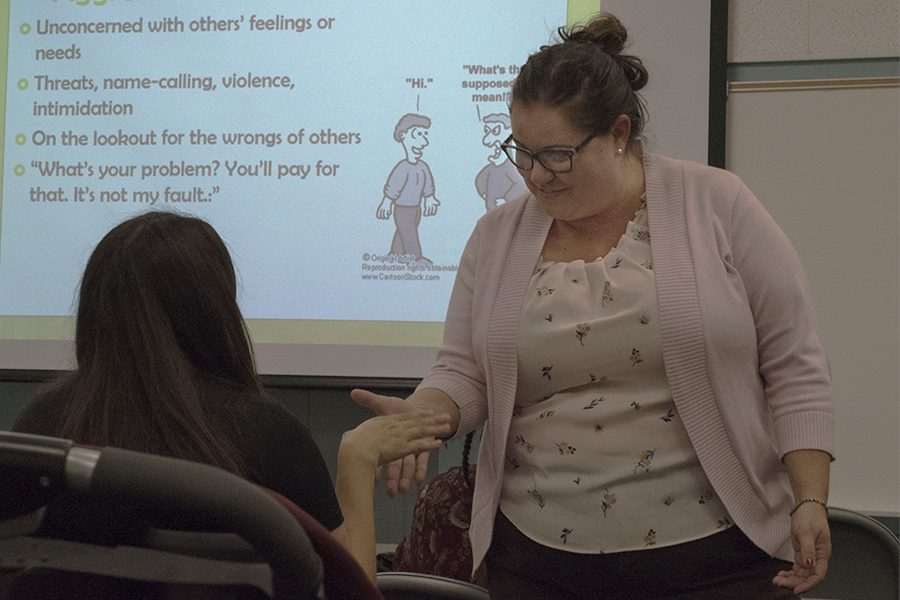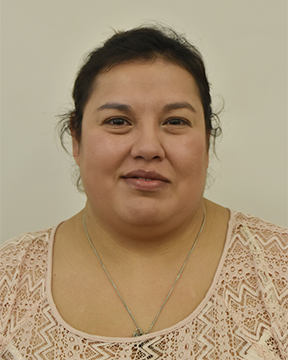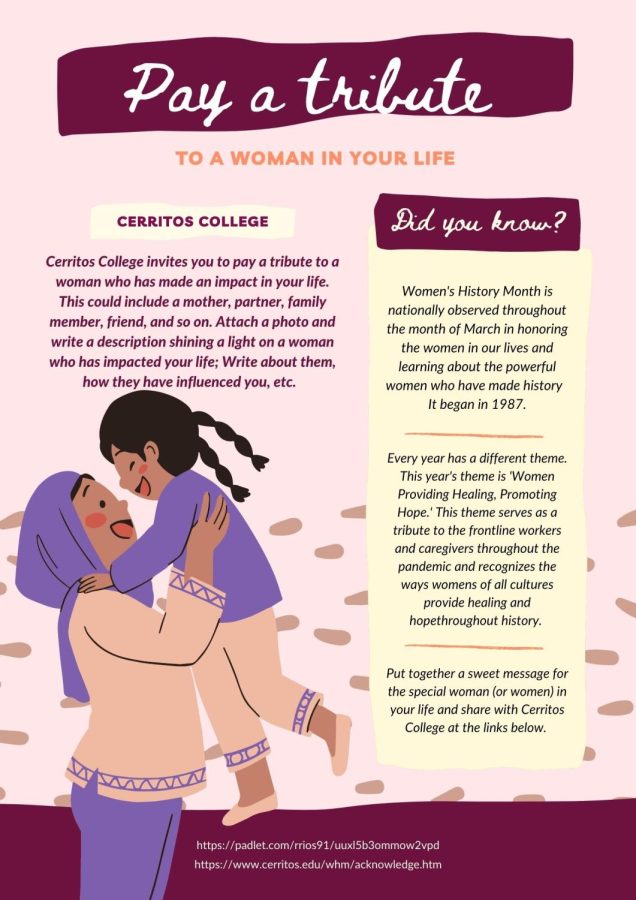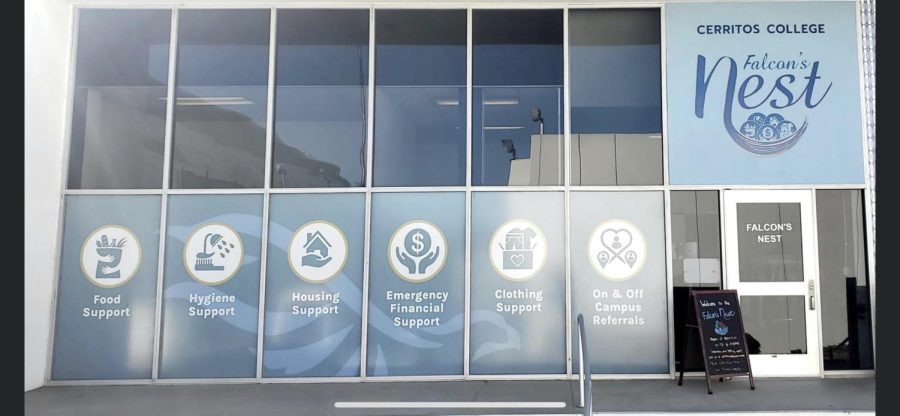The Improving Communication Skills workshop attracted the attention of nine students, students like pharmacy technician major Alex Santa Ana.
He said, “I thought it might be interesting, that I might learn something new.”
Santa Ana was not disappointed, what he found was an animated, enthusiastic presenter that engaged with her audience through the use of humor and real life anecdotal examples of effective and non effective communication.
The Thursday Sept. 15 workshop was presented by Pamela Sepulveda, licensed clinical social worker and community outreach director with the Casa Youth Shelter.
She began the workshop by showing a 2006 Cingular cell phone commercial that illustrates the interaction between spoken communication, body language communication and how they don’t always match.
Although the presentation was set to last only one hour it consisted of a 16 PowerPoint slides focusing on:
- Passive communication style which is someone who does not speak up when there is a problem, wants approval and acceptance, and feels taken advantage of.
- Aggressive communication style is someone who is unconcerned with others feelings, and uses threats, name calling, and violence.
- Passive-aggressive communication style is someone who is indirect sarcastic mocking, gossips and says one thing but means another.
- Assertive communication style is someone who is direct yet polite speaks for self in I statements and is responsible for his own feelings and actions.
- How to recognize signs miscommunication like getting defensive, raising your voice and the use of but in a sentence.
- Common barriers to communicating are things like bringing up the past, judging, blaming, name calling, denying feelings and thinking of a comeback.
- How to get over barriers by staying calm and taking a time out before the conversation escalates to fighting.
- Active listening by using your brain, mouth, hands, and ears to pay attention to what the speaker is saying
Sepulveda made the PowerPoint lively by acting out examples with the students in attendance.
A student arriving late to the workshop became an opportunity to demonstrate passive aggressive communication for Sepulveda by saying “We’re going to stop just for you, everybody already did this [fill out a communication styles quiz].
“‘I’m talking to you in a very passive aggressive way by saying ‘It’s totally ok that you’re here late’ […] when Carlos Santiago walked in I was like ‘hi welcome you can totally come in I’ll pause class for you’ did you hear how I was really sarcastic in my tone?”
“Sarcasm is anger’s little friend” and “Just because it’s normal doesn’t mean it’s healthy” are two examples of the type of humor Sepulveda inserted into her presentation.
Her clear examples and the handout with all of the PowerPoint slides made the presentation very clear to follow and understand.
Santa Ana said the presentation was “very effective, there were things that I learned and didn’t know before.”
The main point he learned was how adding but to a sentence deletes every thing said before the but.
For Sepulveda the main point of the presentation is that “there are four styles of communication and most commonly we are trying to be assertive and when we are assertive we have to be cognizant that we are not violating the rights of others because that is how we become aggressive.”
The goal for effective communication is to use an assertive style of communication, the goal can be reached by “making sure you are giving a voice to your needs and when you are giving a voice to your needs making sure you are doing it while respecting the physical emotional and special rights of others,” Sepulveda said.
With regard to the low turnout she said, “That happens sometimes and I’m hopeful that the people who heard my presentation will through word of mouth, tell people how fantastic it was and bring their friends to the one in October.”
Her hopes might come true Santa Ana stated that “He would come back for another workshop and that he “would recommend it to others.”
The workshop is scheduled for Tuesday, Oct. 25 with the topic being intimate partner violence.









